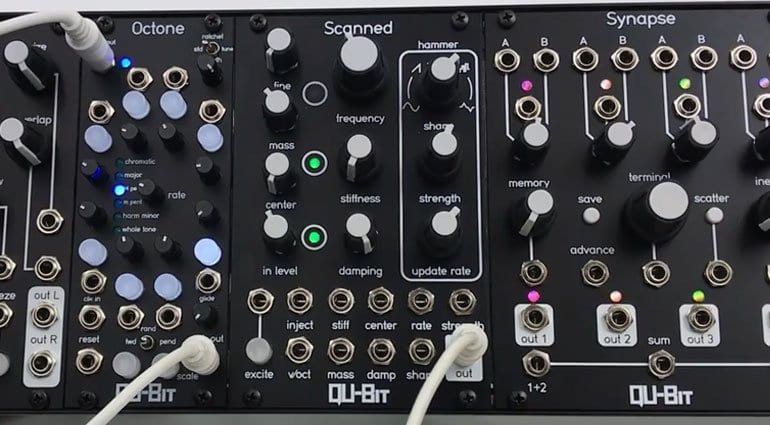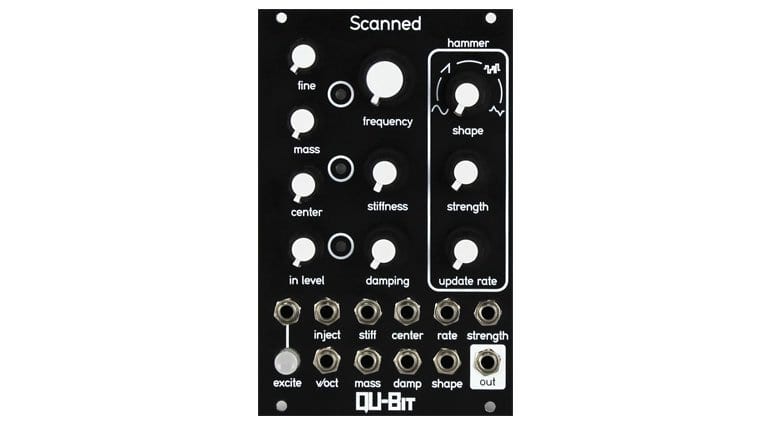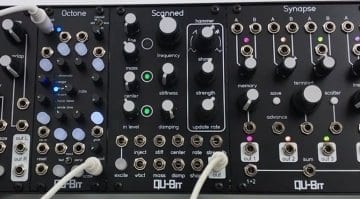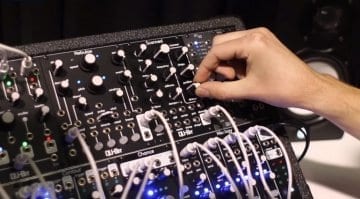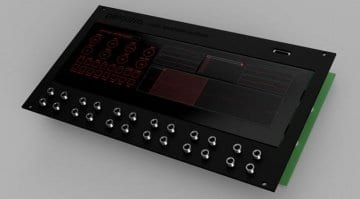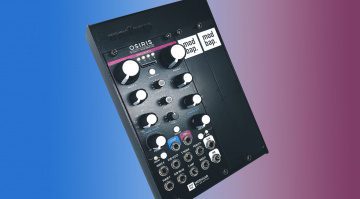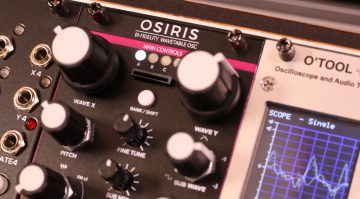Scanned: an organic wavetable oscillator that dynamically grows waves
Qu-Bit has released their scanned synthesis wavetable animater that we first saw at NAMM earlier in the year. Scanned is an interesting concept using an unexplored technique of synthesis that has never before been implemented in hardware.
Scanned
Scanned synthesis was conceived by computer music guru Max Matthews. It’s based around the idea of a string floating in time and space. The string has various attributes or objects attached to it in the form of Mass, Stiffness and Damping. These affect the way the string moves and vibrates. Sounds a lot like physical or acoustic modelling but in Scanned Synthesis new wavetables are being created rather than existing forms being emulated or replicated. To animate the waveform the objects are morphed into the current “hammer” shape and then released. This excites the string and generates evolving textures and harmonic content without the need for external modulation. There are four hammer shapes which are essentially like your starting waveform. You can set strength and update rate and let it go.
The generation of wavetables can be free running or triggered by other modules and can be used as a complete voice without additional filters or VCAs. Although… why not use them anyway? There is an “Inject” CV input to allow either CV or external audio to excite the string. The “Excite” button seems to be really important and lets you manually ping the string. The sounds are interesting, taking on a wide range of tones and movement. The way it evolves from the moment of excitement is really quite remarkable.
There’s CV control over everything, three lovely and animated LEDs and a single audio output. Could be particularly good at drones I think and definitely something that would give your rack a different flavour.
More information
Video
https://www.youtube.com/watch?v=kAErZs7lSf0&feature=youtu.be
